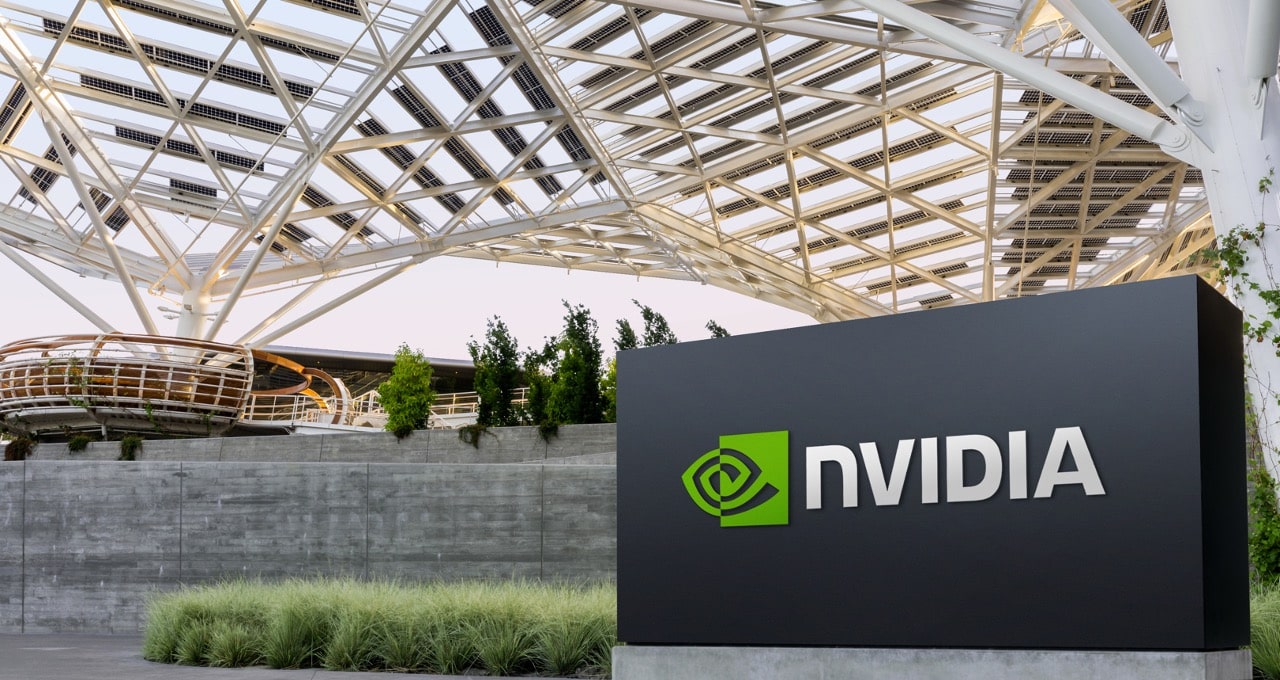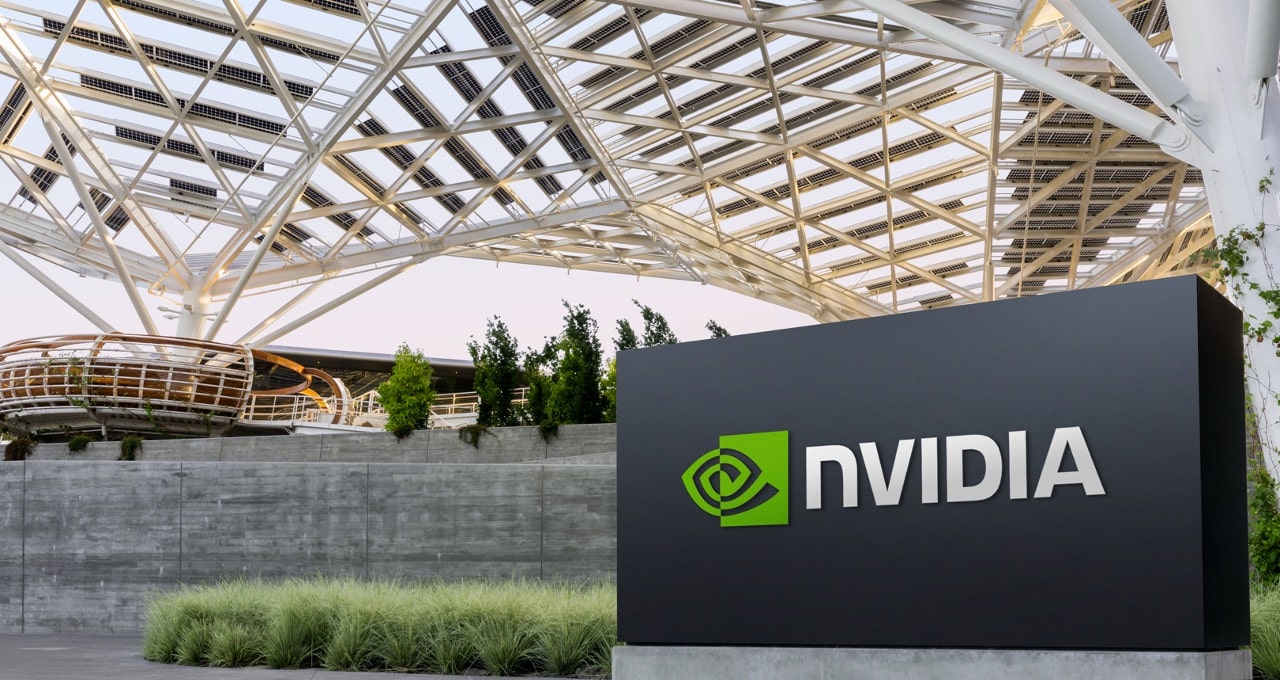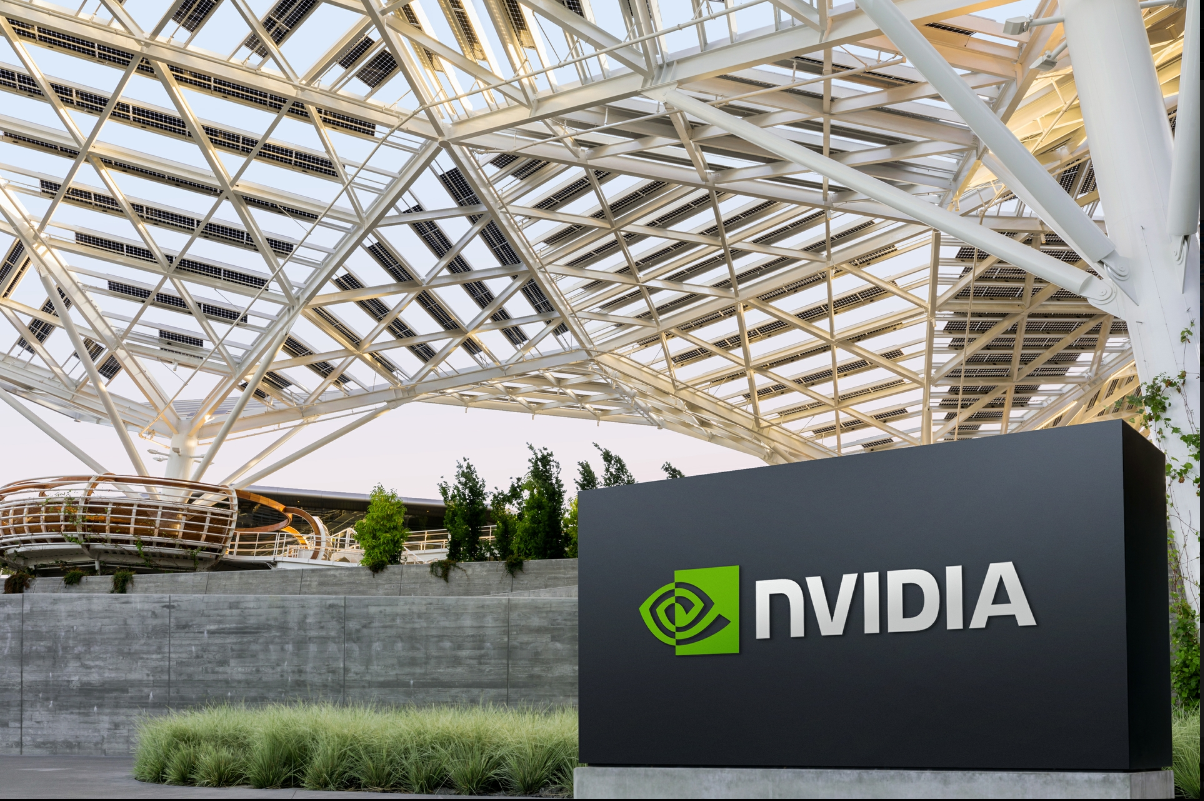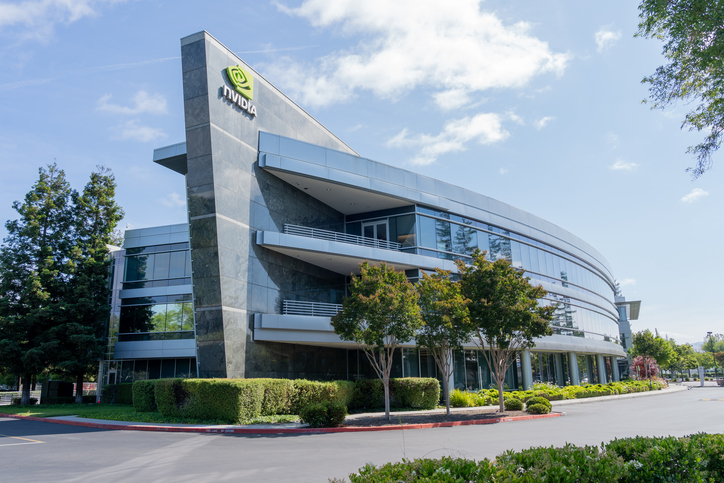CICC Still Bullish on NVIDIA

CICC analysts recently highlighted NVIDIA's (NASDAQ:NVDA) strong positioning within the AIGC (AI-Generated Content) domain, attributing this to its pioneering role in accelerated computing, along with its technological edge and robust ecosystem. The firm has initiated coverage on NVIDIA with an Outperform rating and a target price of $870.
They emphasized NVIDIA's potential to benefit from the burgeoning demand for AIGC infrastructure, underpinned by its AI technology prowess and extensive ecosystem. The analysis further pointed out the significant contribution of cloud and AIGC to the exponential growth of NVIDIA's data center business. NVIDIA's integration of software and hardware is seen as pivotal in advancing computing platforms and solidifying its competitive edge.
Additionally, the firm noted that NVIDIA will continue to lead the high-end graphics card market in the gaming sector, supported by its technological advancements and comprehensive ecosystem.
| Symbol | Price | %chg |
|---|---|---|
| AMD.BA | 34160 | 0 |
| 000660.KS | 580000 | 0 |
| LRCX.BA | 4172.5 | 0 |
| TXN.BA | 46880 | 0 |

NVIDIA Corporation (NASDAQ:NVDA) Achieves Historic Market Cap Milestone
- NVIDIA Corporation (NASDAQ:NVDA) has been upgraded to "Overweight" by Cantor Fitzgerald, indicating a positive outlook for the stock.
- The company has reached a $5 trillion market capitalization, driven by significant stock price increases and strategic announcements in AI technology.
- NVIDIA's strategic investments and partnerships, including a $1 billion investment in Nokia and collaborations with Oracle and Palantir Technologies, are expected to strengthen its position in the AI market.
NVIDIA Corporation (NASDAQ:NVDA) is a leading technology company known for its advanced graphics processing units (GPUs) and AI hardware. Recently, Cantor Fitzgerald updated its rating for NVDA to "Overweight," with the stock priced at $208.84. This update suggests a positive outlook, as highlighted by StreetInsider in their article "NVIDIA (NVDA) Too Inexpensive to Ignore: Analyst."
Nvidia has achieved a historic milestone by becoming the first company to reach a market capitalization of $5 trillion. This achievement was driven by a surge in its stock price, which rose by 4.5% to $210, following a 5% increase the previous day. CEO Jensen Huang's keynote at the developers conference in Washington, D.C., showcasing new AI products and strategic deals, contributed to this rally.
Among the strategic announcements, Nvidia revealed a $1 billion investment in Nokia and a partnership to enhance AI infrastructure. Collaborations with Oracle to build AI supercomputers for the U.S. Department of Energy and with Palantir Technologies on AI technology development further highlight Nvidia's growth strategy. These initiatives are expected to bolster Nvidia's position in the AI market.
Nvidia's stock has seen a remarkable increase of over 50% since the beginning of the year, driven by strong demand for AI chips. Over the past decade, Nvidia's stock has surged by more than 44,000%, significantly outperforming major indices like the Nasdaq and the S&P 500. This growth reflects investor optimism and the company's continued expansion in AI technology.
Nvidia's market value now surpasses Germany's GDP of $4.6 trillion, positioning it ahead of major global economies. The company's largest customers include OpenAI, Tesla, Meta, Amazon, and Oracle. The recent surge in Nvidia's stock was further fueled by CEO Jensen Huang's announcement of anticipated $500 billion in AI chip sales, underscoring the company's leadership in the AI industry.

Nvidia Corporation (NASDAQ:NVDA) Sees Bullish Price Target Amid AI Hype
- Wolfe Research sets a price target of $230 for Nvidia, indicating a potential upside of 14.41%.
- Nvidia's strong market position is driven by AI technologies and its successful GTC conference.
- The company's stock has experienced significant growth, with a year-high of $203.15 and a robust market capitalization of approximately $4.89 trillion.
Nvidia Corporation, listed as NASDAQ:NVDA, is a leading player in the semiconductor industry, known for its graphics processing units (GPUs) and AI technologies. On October 28, 2025, Wolfe Research set a price target of $230 for Nvidia, suggesting a potential upside of 14.41% from its current price of $201.03, as highlighted by TheFly.
Vivek Arya from Bank of America Securities emphasizes Nvidia's strong market position, driven by the AI hype and its second GTC conference. This aligns with Wolfe Research's optimistic outlook, suggesting significant upside potential for Nvidia. The stock's recent 4.98% increase, reaching a high of $203.15, reflects investor confidence.
Nvidia's stock has shown impressive growth, with a year-high of $203.15 and a low of $86.62. This volatility indicates strong market interest and potential for further gains. The company's market capitalization is approximately $4.89 trillion, supported by a trading volume of 287.79 million shares, highlighting its prominence in the semiconductor sector.
The rise in semiconductor stocks, as noted by Arya, is largely driven by the ongoing AI hype. Nvidia, along with peers like Broadcom and AMD, is well-positioned to capitalize on this trend. The company's strategic initiatives, such as the GTC conference, further bolster its market standing and growth prospects.

NVIDIA Corporation's Market Position and Growth Prospects
- NVIDIA Corporation (NASDAQ:NVDA) is a key player in the AI and technology sector, with significant partnerships enhancing its market position.
- A price target of $210 set by D.A. Davidson indicates a potential upside of approximately 14.37% from its current price.
- The company's substantial market capitalization of approximately $4.47 trillion and strong investor interest highlight its significant growth and confidence in its future potential.
NVIDIA Corporation, trading under the symbol NVDA on the NASDAQ, is a leading player in the technology sector, particularly known for its graphics processing units (GPUs) and AI capabilities. The company has established itself as a key contributor to the AI industry, collaborating with major players like OpenAI. This partnership highlights NVIDIA's significant role in advancing AI technology in the United States.
On September 22, 2025, Gil Luria from D.A. Davidson set a price target of $210 for NASDAQ:NVDA. At that time, NVDA's stock was priced at $183.61, indicating a potential upside of approximately 14.37%. This optimistic target reflects confidence in NVIDIA's growth prospects, likely influenced by its strategic partnerships and market position.
Currently, NVDA's stock is priced at $183.61, having experienced a price change of $7.01, which is an increase of about 3.97%. The stock has shown volatility, with a daily range between $174.71 and $184.54. This fluctuation is typical for tech stocks, especially those involved in rapidly evolving sectors like AI.
NVIDIA's market capitalization is approximately $4.47 trillion, underscoring its substantial presence in the market. The trading volume of 266.89 million shares indicates strong investor interest. Over the past year, NVDA's stock has seen a high of $184.55 and a low of $86.62, reflecting significant growth and investor confidence in its future potential.

Nvidia Corporation (NASDAQ:NVDA) Maintains Positive Outlook with "Overweight" Rating
Nvidia Corporation, listed on the NASDAQ as NVDA, is a leading player in the technology sector, known for its graphics processing units (GPUs) and artificial intelligence (AI) innovations. On August 28, 2025, KeyBanc maintained an "Overweight" rating for Nvidia, indicating a positive outlook on the stock. At the time, NVDA was priced at $181.60, reflecting investor confidence in the company's future performance.
KeyBanc's decision to raise Nvidia's price target from $215 to $230, as highlighted by TheFly, suggests optimism about the company's growth prospects. Despite a slight decrease of 0.17, or 0.09%, in the stock price, Nvidia's market capitalization remains robust at approximately $4.43 trillion. This indicates strong investor interest and confidence in the company's long-term potential.
Nvidia's earnings and guidance have been a focal point for investors, causing some volatility in Wall Street stock futures. Initially, Nvidia's premarket losses were around 3%, but they have since been reduced to under 2% as the opening bell approaches. This reduction in losses suggests a stabilizing sentiment among investors, despite the initial volatility.
The stock has fluctuated between a low of $179.10 and a high of $182.49 today, showing some movement within a narrow range. Over the past year, Nvidia's stock has reached a high of $184.48 and a low of $86.62, indicating significant growth and volatility. The trading volume for the day is 181.18 million shares, reflecting active investor participation in the market.

NVIDIA Corporation (NASDAQ: NVDA) Overview: A Leader in Technology and AI
- NVIDIA's consensus price target has shown a notable upward trend, with the latest average price target set at $215.20, reflecting positive sentiment among analysts.
- The company's strong earnings reports, highlighting robust revenue growth in data center and gaming segments, have contributed to a positive outlook, with Needham setting a price target of $230.
- Analysts have become more optimistic about NVIDIA's prospects due to its expansion into AI and autonomous vehicle solutions, marking a steady increase in the average price target from $198.91 last quarter to $230 now.
NVIDIA Corporation (NASDAQ: NVDA) is a leading player in the technology sector, known for its innovations in graphics processing units (GPUs) and artificial intelligence (AI). The company has a strong presence in the data center and gaming markets, and its strategic partnerships and expansions into AI and autonomous vehicle solutions have bolstered its market position. NVIDIA competes with companies like AMD in the AI chip market, and its performance is closely watched by investors and analysts.
Over the past year, NVIDIA's consensus price target has shown a notable upward trend. Last month, the average price target was $215.20, reflecting positive sentiment among analysts. This optimism is likely driven by NVIDIA's strong earnings reports, which have shown robust revenue growth in its data center and gaming segments. As highlighted by Needham, the price target for NVIDIA is set at $230, indicating a positive outlook for the company's stock.
In the last quarter, the average price target for NVIDIA was $198.91, marking a steady increase from the previous quarter. This suggests that analysts have become more optimistic about NVIDIA's prospects, likely due to its expansion into AI and autonomous vehicle solutions. These markets are expected to grow significantly, boosting analyst confidence in NVIDIA's future performance.
A year ago, the average price target for NVIDIA was $178.46. The significant increase in the price target over the past year highlights a growing bullish sentiment towards NVIDIA. This optimism is supported by strategic partnerships, such as the collaboration with Kroger Co., which positions NVIDIA well in the market and potentially leads to increased revenue streams and market share.
NVIDIA's upcoming earnings report is drawing significant attention from investors, particularly concerning its AI chip business in China. The outcome of these earnings will provide insights into how geopolitical factors are impacting NVIDIA's operations in the region. Despite potential challenges, analyst Needham has set a price target of $230 for NVIDIA, indicating expectations for the company's performance amidst these challenges.

NVIDIA Corporation (NASDAQ:NVDA) Sees Positive Outlook from Piper Sandler
NVIDIA Corporation, listed as NASDAQ:NVDA, is a leading player in the technology sector, known for its graphics processing units (GPUs) and artificial intelligence (AI) innovations. On August 13, 2025, Piper Sandler upgraded NVDA to an "Overweight" rating, indicating a positive outlook on the stock. At the time, NVDA was priced at $183.16, with Piper Sandler raising its price target from $180 to $225.
The stock has seen a remarkable surge, climbing 48.9% over the past 90 days. This increase has brought NVDA close to its all-time high, trading just below $185. The stock's current price of $183.16 reflects a slight increase of 0.60%, or $1.10, from the previous day. This upward trend aligns with Piper Sandler's optimistic outlook.
Today's trading activity for NVDA shows a fluctuation between a low of $179.46 and a high of $183.34. Over the past year, the stock has reached a high of $184.48 and a low of $86.62, demonstrating significant volatility. Despite this, the company's market capitalization remains robust at approximately $4.47 trillion, underscoring its strong market position.
The trading volume for NVDA today stands at 144.83 million shares, indicating active investor interest. This level of trading activity suggests that the market is responsive to the recent upgrade and price target adjustment by Piper Sandler. As NVDA continues to trade near its all-time high, investors are closely watching its performance in the coming months.

NVIDIA Corporation (NASDAQ:NVDA) Sees Optimistic Price Target and Record Highs
- NVIDIA Corporation (NASDAQ:NVDA) receives a bullish price target from Mizuho Securities, suggesting a 12.48% potential upside.
- The company's stock hits a new record high, reflecting strong market confidence and potential for future growth.
- NVIDIA's H20 chip news in China boosts stock performance, highlighting the company's innovative edge in the technology sector.
NVIDIA Corporation (NASDAQ:NVDA), a leading player in the technology sector, is renowned for its advanced graphics processing units (GPUs) and innovative computing solutions. The company boasts a significant market presence, with a market capitalization of approximately $4.165 trillion. NVIDIA competes with other tech giants like AMD and Intel in the semiconductor industry.
On July 15, 2025, Vijay Rakesh from Mizuho Securities set a price target of $192 for NVDA, suggesting a potential upside of 12.48% from its current price of $170.70. This optimistic outlook aligns with the company's recent achievements, including reaching a new record high, as highlighted by Jim Cramer on 'Mad Money'.
NVIDIA's stock has seen a price change of $6.63, marking a 4.04% increase. The stock fluctuated between $169.20 and $172.39 today, with the latter being its highest price over the past year. This performance reflects strong market confidence, further supported by Gene Munster from Deepwater Asset Management, who noted that the latest H20 news could boost street estimates by 10%.
The positive news regarding NVIDIA's H20 chip in China has significantly boosted the company's stock, as discussed by the 'Fast Money' traders on CNBC Television. This development underscores NVIDIA's strong market position and potential for future growth, contributing to its record-high stock performance.







